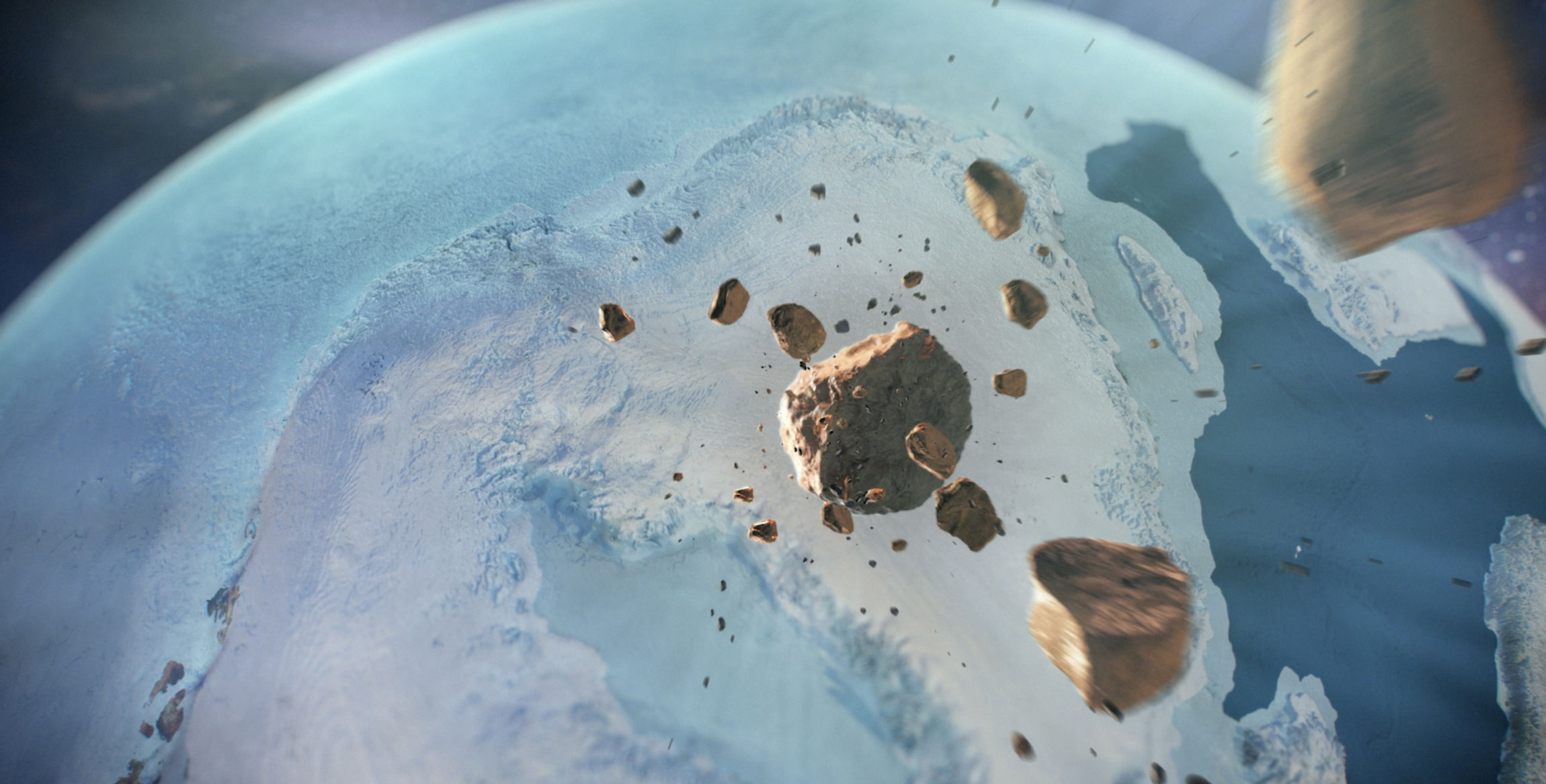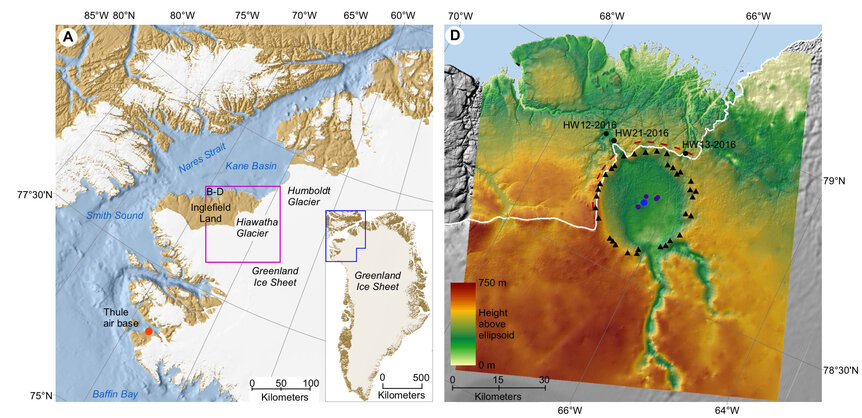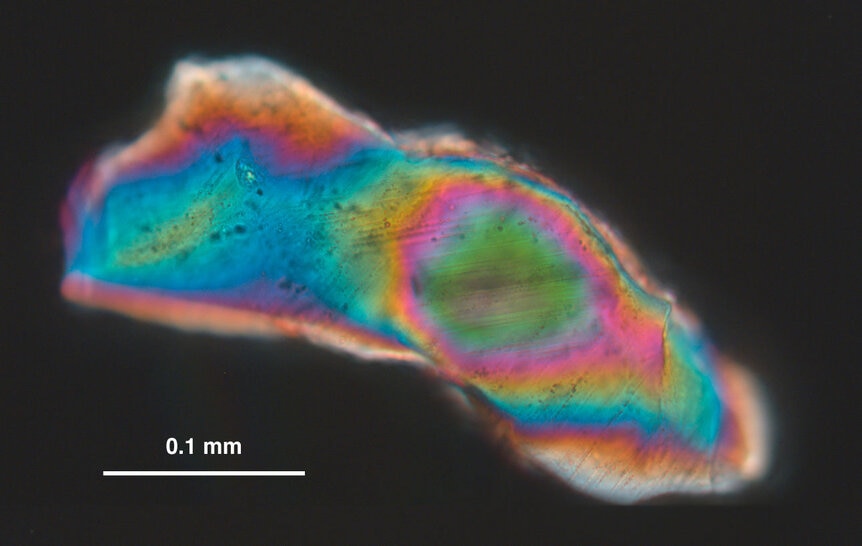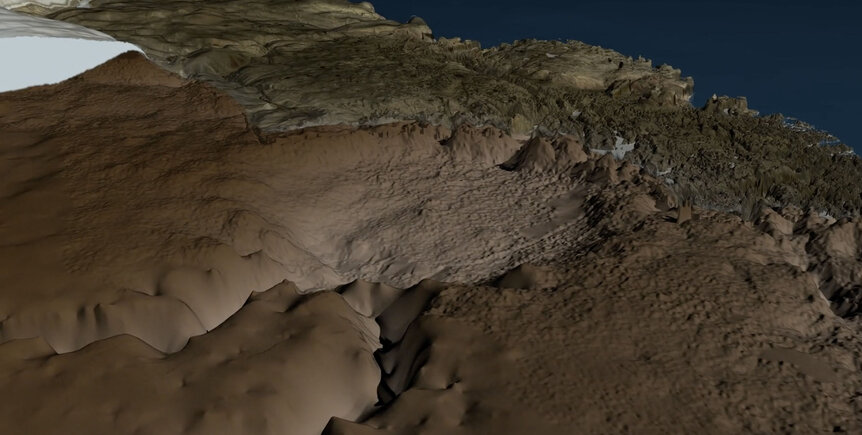Create a free profile to get unlimited access to exclusive videos, sweepstakes, and more!
Deep freeze impact: Scientists find a *huge* asteroid impact crater under Greenland’s ice

Scientists have discovered an enormous crater in northwestern Greenland, buried under a kilometer of glacial ice. And by “enormous”, I mean it: The crater is 31 kilometers across — easily big enough to swallow up Washington, D.C. — 320 meters deep, and was created when an iron-rich asteroid slammed into Earth some time in the past.
… and maybe not all that long in the past.
I’m always skeptical when someone announces a new impact crater; they can be pretty hard to identify, and conclusive evidence is tough to come by. A lot of things look like craters, including volcanoes and various geological formations. But the evidence presented in the journal paper is pretty convincing, and includes one of the gold standards of an impact event: shocked quartz, which I’ll get to in a sec.
The crater was first noted by scientists looking at NASA data taken as part of the Program for Arctic Regional Climate Assessment and Operation IceBridge from 1997 to 2014. This was radar data taken by airplanes that fly over the ice; the radar can penetrate the ice and get reflected by the rock underneath. Careful timing of how long the pulses take to go down and back up reveals the topography of the rock; a pulse hitting a hill peak, for example, takes less time than one that reflects off the bottom of a valley. The crater outline was in the data, but not quite sharply enough to be sure (the researchers have also noted that if you know what you’re looking for, the rim can be seen from the air, and the surface of the ice at that location shows a dip as well).
So this evidence was interesting, but not convincing. However, much better follow-up data taken in 2016 revealed the crater much better. It has the classic features of an impact structure: A raised rim with multiple sharp peaks around it, a flattened bowl-shaped floor, and several central peaks forming one a structure about 8 km across. But that’s still not enough to be sure.
An expedition to the northern part of the feature changed that. The region is covered by the Hiawatha glacier, and there’s a subglacial river that comes out there. Samples of sediment from the river were collected, and brought back to a lab to examine. And that’s where the scientists hit the jackpot: They found quartz grains that showed clear evidence of a specific disturbance in their crystalline structure — a deformation caused by an intense pressure wave slamming into them. This is called shocked quartz, and is a smoking gun when it comes to impacts. Even huge volcanic explosions can’t create it. It takes the massive and energetic collision of an asteroid with Earth to make these structures in quartz.
Not only that, they found glassy grains in the sediment too, which you expect from the heat of impact melting rock and dirt. Finally, they also found elevated amounts of elements like cobalt, nickel, and gold: Those indicate it was a metallic iron asteroid that hit Earth and carved out that great gaping pit.
How big was the asteroid? Judging from the size of the crater, it would have been roughly 1–1.5 kilometers across.
Holy crap. That’s a big rock. Moving at 20 kilometers per second or so, the impact would have vaporized about twenty cubic kilometers of rock, and released about 3 sextillion Joules of energy — the explosive equivalent of detonating three quarters of a million one-megaton bombs.
That’s 15,000 times the yield of the largest nuclear weapon ever tested on Earth. So yeah. Quite a big bang. Oof. The crater size of 31 kilometers makes it one of the top 25 biggest known impact craters on Earth.
The big question, though, is: When did it hit?
It turns out that’s an interesting question indeed. The well-preserved structure of the crater strongly implies it’s geologically young, and the scientists estimate it’s no older than about 3 million years.
But it could be substantially younger. Moving ice tends to erode structures underneath pretty rapidly. There are several layers of ice over the crater, including one that goes down to a depth of 700 meters from the surface that appears pretty clean and smooth. Beneath it is a layer that is disturbed and mixed with a lot of debris, which is what you’d expect for ice over a crater. If the crater were very old, this ice would have equilibriated, reached some sort of balance with the crater under it. It hasn’t, again indicating youth.
The researchers conclude the ice could — stress could — be as young as 12,000 years.
Yikes. That’s pretty recent. Either way, it most likely hit during the Pleistocene era, when Greenland was covered in ice.
That raises some issues, though. An impact of this size (technically, “pants-wettingly big”) would have thrown a lot of debris into the air — many cubic kilometers of it — that would then settle back down. Given various factors (like whether there was ice there or not, the impact angle, and so on) this dust would have settled onto the ice and buried over time with more ice. But of that were the case, we’d see it in ice cores from the region, but no such layer has been detected. That’s a mystery.
I’ll note that there are some folks who think there was a big impact, called the Younger Dryas impact, about 13,000 years ago over North America that started huge fires, wiping out lots of megafauna in the area at the time, as well as a Paleoamerican peoples called the Clovis. I’ve never been convinced by these arguments, mostly because no good evidence of an impact has ever been shown.
Is this impact the culprit? Well, that’s hard to say. The timing overlaps, though the age of the crater really is pretty poorly known. But an impact like this certainly would have had regional effects, if not over the northern hemisphere.
It’s interesting, but by no means conclusive. Too much of the evidence is circumstantial.
Clearly, nailing down the date of the impact is a priority, as is mapping it in more detail. I expect that’ll happen rather rapidly; this is a pretty exciting discovery! It’s also the first crater ever detected on Greenland, or anywhere under a continental ice sheet. It also can help with understanding how often big impacts occur; the youngest known, and most well-preserved crater, on Earth right now is Meteor Crater in Arizona. It’s about 50,000 years old, and far smaller (about a kilometer wide). Big impacts are thankfully rare, but how rare? Getting a better date for this one would help a lot.
Thanks to NASA we’re now getting high-resolution maps of the structures under the ice in Greenland, Antarctica, and other regions. If a crater this whopping big can have hidden from us in plain sight all this time, what else will we find there?

















